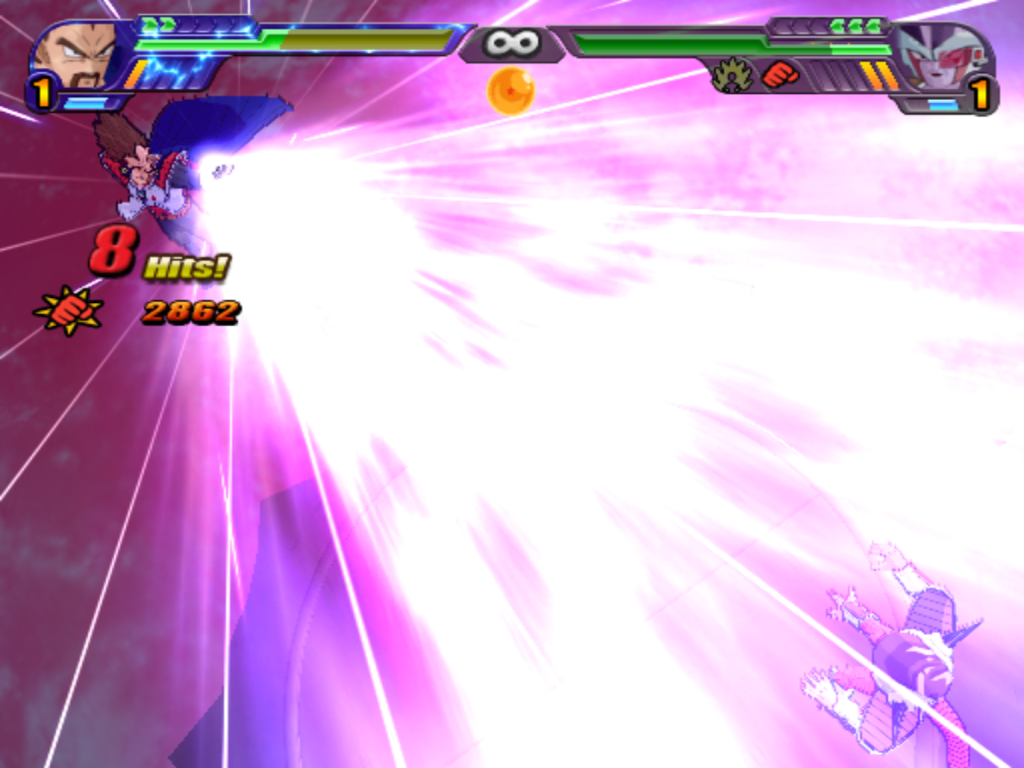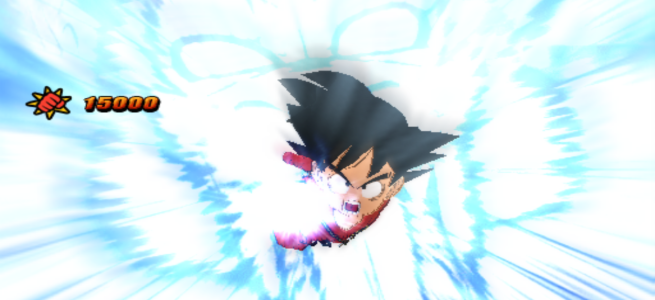Over the years I’ve been doing this blog there have definitely been games I’ve always intended to review. This has mainly been for nostalgic reasons, which I’m sure makes sense; after all, like any nerd with a platform, I just want to share the things I love with the world but at great and overly detailed length. As we’ve worked through the previous two Budokai Tenkaichi games I’ve made reference to the third entry in the franchise as one I’ve been particularly excited about getting to for precisely this reason. For me this was one of the defining Dragon Ball games of my youth, the one that stood out among a respectable lineup of options. But as ever the question is whether or not it stands the test of time; the first game failed to feel like anything more than a template and the second suffered from some difficulties borne from its attempts to prioritise accuracy over player experience, so can the third strike the balance?
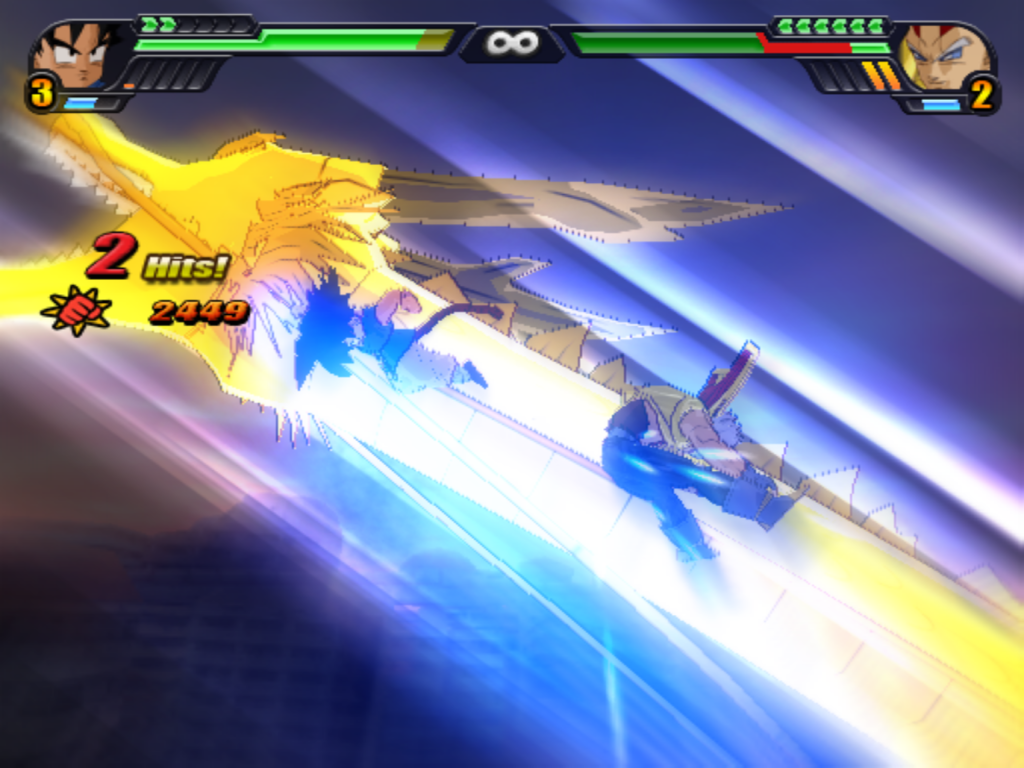
Dragon Ball Z: Budokai Tenkaichi 3 (PS2 [reviewed], Wii)
Released Nov 2007 | Developed: Spike | Published: Namco Bandai / Atari
Genre: Fighting | HLTB: 22 hours
If you’ve followed along with either of my reviews of the previous two Budokai Tenkaichi games then it ought to be apparent by now that I place a huge value on the campaign experience of fighting games. I know that’s not always the primary concern of this genre but I think that the developer’s care towards the single player experience is often one of the most telling aspects of any given fighter. We’ve touched on it in reviews of both of the other games. The first Tenkaichi game struggled with its accuracy; despite the massive roster, it still failed to represent many of the battles across the course of the series, which is definitely a black mark against an adaptation like this. On the other hand, Tenkaichi 2 opted to go too far in the other direction, with a sprawling, overly-long campaign that made sure we played an overwhelming number of fights but failed to make use of its in-built character swapping mechanic, instead forcing us out to the world map constantly between fights, reducing the pace to glacial. It seems obvious then that this third game had to strike a balance somewhere in the middle.
I’m happy to report that I think it does a pretty good job in that regard. Firstly our campaign returns to presenting fights in terms of “sagas”, or arcs. I prefer this; it keeps it nice and simple as you just select what arc you want to play and then you crack on. Dragon Ball has been going on for a very long time and giving players one continuous story retelling of it is asking for burnout in my opinion. Within each saga menu you select which fight you want to do, so you can easily replay specific fights if you’re so inclined.
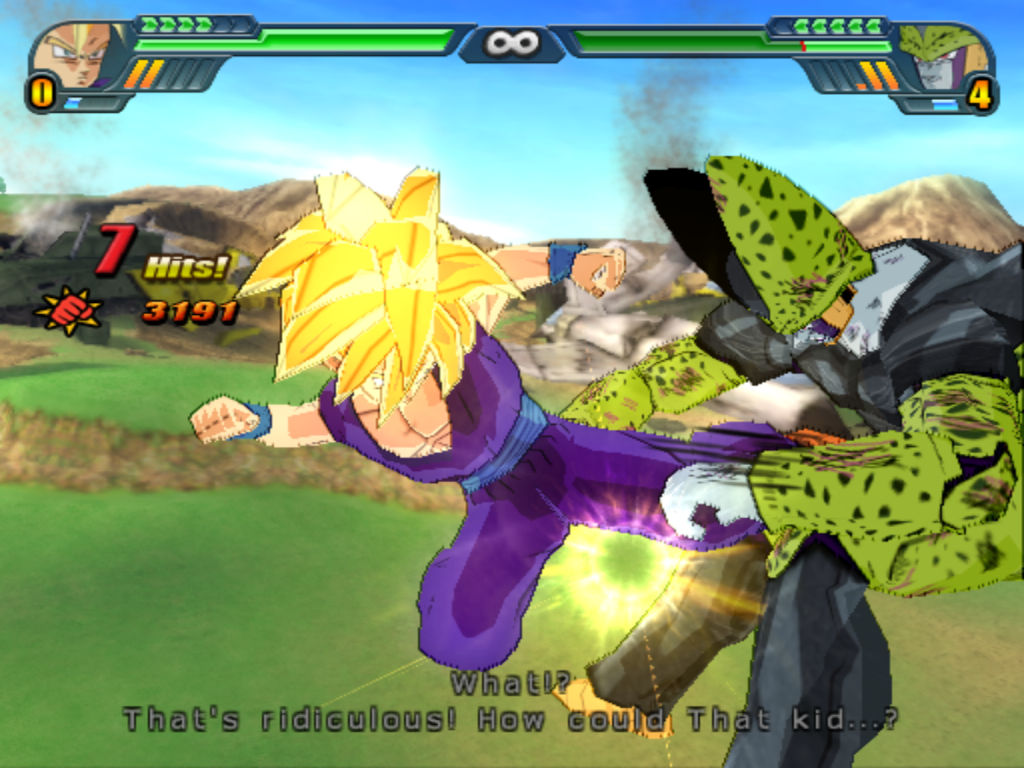
Once you’re in a fight we finally – finally! – get a Tenkaichi game that actually uses the tools at its disposal. Like Tenkaichi 2, 3 uses a team battle system so you can field multiple characters against one another, and in this game that’s also used in the campaign. You can’t select what characters to use, obviously, but if a fight in the show featured more than one combatant on either side, it does here too. However, 3 takes it to another level by building its campaign battles around specific story beats that play out in-fight, with fighters changing and even the stats of characters being augmented as the round plays out in order to try and create a battle that authentically captures that moment in the show.
Take the first battle in the game, for example. We take control of Goku during his showdown with his brother Raditz, who has come to Earth as the vanguard of the Saiyan invasion. Problem is, Raditz is far stronger than Goku, and this is shown in the game by us being barely able to hurt him; it’s a survival fight, expecting players to kite away and use special attacks to keep our assailant at bay. In previous games this would be all we get – survive a timer ticking down. However, after a while we get a prompt on-screen. Pressing it switches Goku out with Piccolo as he nurses his injuries, representing the fact that these two one-time enemies had to join forces to match Raditz. Our next event prompt tags Goku back in as the voiceover replays the moment in the show where Piccolo begins to charge the first instance of his signature attack, the makankosappo. Finally, a prompt switches Piccolo back in where he automatically uses his attack to defeat Raditz, regardless of the latter’s health.
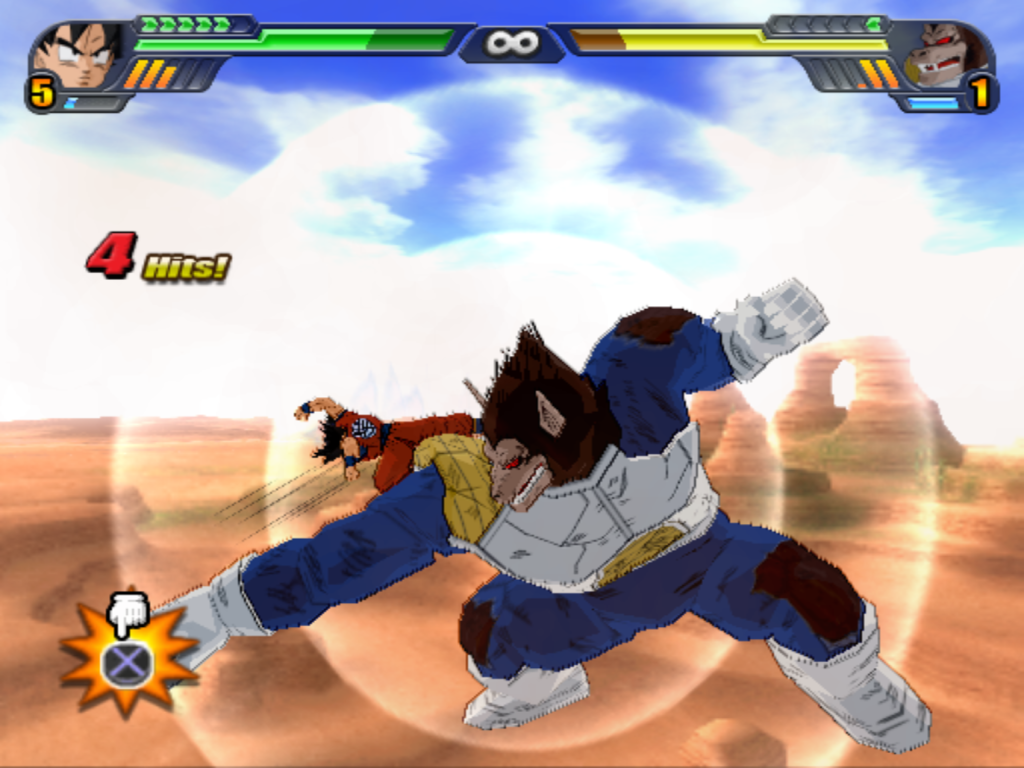
Almost every fight in the campaign plays out similarly to this, although only a few have the same way of automatically ending – chiefly those are held for the big finales of arcs where recreating the moment in which a big villain is defeated is more desired. I have to say I love this, and far prefer it to the way the campaigns have been in the previous games; I think the focus on the spectacle serves this kind of love letter to Dragon Ball brilliantly. I know some folk prefer the longer, more involved format of 2, but I do think that distilling the many, many fights across all of Dragon Ball down to this is a lot more easily digestible and that counts for a lot in my book. It’s not all perfect; some sagas are a bit truncated for unexplained reasons – the Frieza arc for example cuts out the opening fights with villains like Dodoria and Zarbon, and we come in just as Goku returns to defeat the Ginyu Force, which is a bit irritating, but it’s not many arcs that are cut down like this.
It feels like a bit of a come down to try and talk about the other aspects to Tenkaichi 3, mainly because a lot of it boils down to “yeah, it’s good.” The basic gameplay is the same as the previous two iterations on it, albeit far tighter and with yet more work put into making characters feel a bit more distinct from each other as possible. Tenkaichi combat has always been fairly simple. Every character can do a melee combo string that ends with them batting their opponent away, although the length of the combo and the damage it does depend on your fighter. You can chuck ki blasts to plink away at health, or charge one big attack up to try and knock your foe off balance to get in close for a quick hit or buy you time to charge your ki back up. A heavy attack can be added to a combo string to stun, and depending on your fighter and where in the combo you use it comes can have different effects. Charging your heavy attack sends your opponent flying, giving you an opportunity to charge them down and continue wailing on them, creating very long – not to mention satisfying – combo strings that see you both get sent all over the arena.
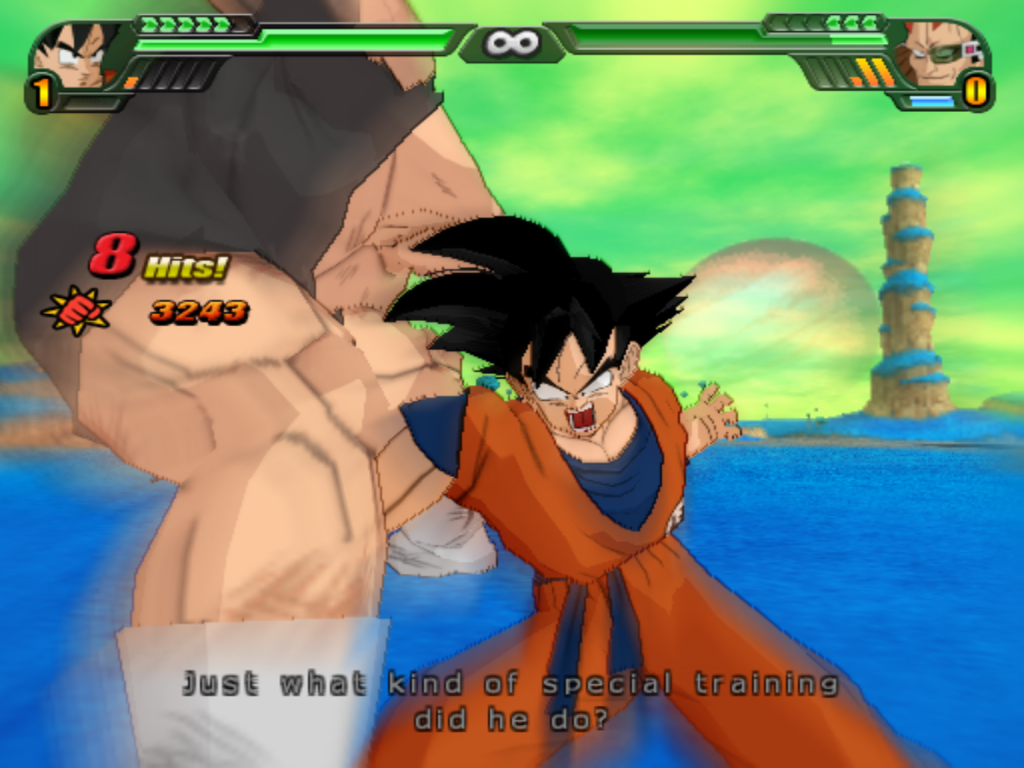
Obviously you also get access to the franchise’s staple special attacks and techniques, and what ones they are will of course depend on your chosen fighter. These are fundamentally the same as the other games but there’s been even more time put into them here, with many characters boasting entirely unique moves. Some even the most anti-anime onlookers will recognise, such as the various iterations of the kamehameha, but many others will only really be rewarding to ardent fans of the show. That is, naturally, half the joy here though; the more invested you are in the source material, the more you’ll get from Tenkaichi 3, and this instalment is particularly rewarding for Dragon Ball fans. It’s one thing seeing Goku’s favoured finishing move, the Spirit Bomb, be an all-powerful super move, but it’s even better seeing so many variants of it here, and all of them lifted from the pages of the manga and the cells of the show, from Goku’s (well, Krillin’s) twisting one-hander that sent Vegeta flying in the Saiyan saga right through to the one blocked by Kid Buu at the end of the show’s first run until Goku transforms into a Super Saiyan form, a feat thought impossible to combine with the Spirit Bomb, and explodes it, vaporizing Z’s most dangerous villain and ending the show.
This level of fan pandering also comes through with the roster. Tenkaichi games have always had massive lists of playable characters but 3 takes the cake with over 160 different fighters across all the different forms and transformations. That is, quite frankly, bewildering, and the fact that the developers decided to take the time to dive into the franchise and pick out some incredibly deep cuts is amazing; fans of Android 8 can finally rejoice! I’m a particular fan of the addition of fighters like King Vegeta and King Cold, neither of whom get any real screentime at all in the show, plus getting to play as Nail before he fuses with Piccolo is cool. Obviously the best new character is Future Gohan, the dark future variant of the character who trains Trunks before the Android saga, plus the attention to detail in having his primary combos and attacks use only his feet and one hand because his battle damage includes the show-accurate point of him losing an arm!
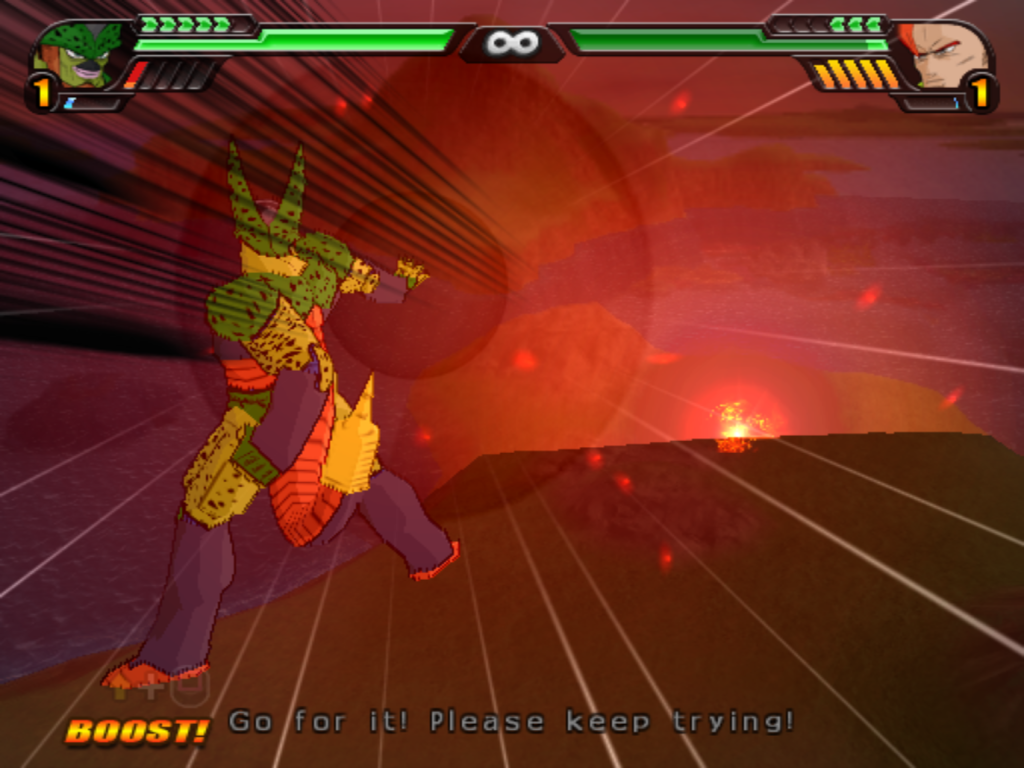
I also like the touch of adding day and night variants to stages, partly just because I’m a deeply boring individual, but also because it genuinely has one thing it alters about fights – but only for a tiny select few characters! Certain Saiyan characters come with Oozaru transformations, allowing them to shift into their rampaging Great Ape forms. However, they can only do this in the light of the full moon, so nighttime stages are the only place some Saiyans can transform on! It’s not a restriction that applies to all of them; in the show Vegeta demonstrated a technique that saw him great a fake energy-ball moon which he used to transform, and indeed he and other high ranking Saiyans can do this very move to transform on any stage regardless of the time of day. This is the kind of lore accuracy that adaptations strive for but so few hit – the kind of stuff that casual players will sit there asking “but why?” but people who’ve wasted far too much of their hyperfixation time on Dragon Ball (i.e., me) get to sit there and bask in seeing a show truly come to life in playable form.
The devil’s in the details with these kinds of adaptations, and Tenkaichi 3 is unashamed in how granular it gets. It’s a game for Dragon Ball nerds and it is proud of that. There’s definitely a fighting game underneath all of the glorious Dragon Ball trappings but it’s not a complicated or terribly competitive one; instead, it’s content to give players a power fantasy playground which, let’s face it, is the right way to go about this. If you’re looking for a balanced fighting game then you’ll almost definitely want to keep walking, but if you’re after one of the best Dragon Ball simulations ever made, Budokai Tenkaichi 3 has got you covered.
6/7 – EXCELLENT.
Games with a touch of brilliance. It might only just miss out on being an absolute favourite, but you should definitely play this.
